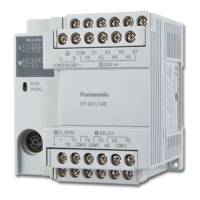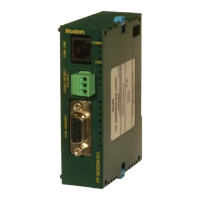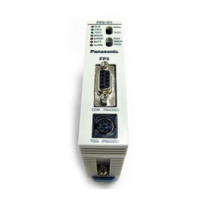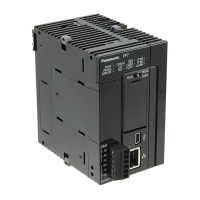4.1 Confirming I/O Allocation
4.1.1 When Using Pulse Output Table Setting Mode
● The home input signal and positioning completion signal is allocated to I/O signals.
■
Allocation of I/O signals (Input)
Signal name
I/O No.
Axis 1 Axis 2 Axis 3 Axis 4 Axis 5 Axis 6
CH0 CH1 CH2 CH3 CH4 CH5
When using the
transistor output
Control Unit
J-point control
positioning start
input
X0 X1 - - - -
Home input
(Note 1)
X4 X5 X6 X7 X2 X3
Near home input
(Note 1)(Note 2)
(Y70) (Y71) (Y72) (Y73) (Y74) (Y75)
Over limit input (+)
(Note 2)
(Y80) (Y82) (Y84) (Y86) (Y88) (Y8A)
Over limit input (-)
(Note 2)
(Y81) (Y83) (Y85) (Y87) (Y89) (Y8B)
BUSY X28 X29 X2A X2B X2C X2D
Operation done X30 X31 X32 X33 X34 X35
Home return done X48 X49 X4A X4B X4C X4D
When using the
relay output type
pulse I/O cassette
J-point control
positioning start
input
X100 X200 - - - -
Home input
(Note 1)
X102 X202 - - - -
(Note 1) Even when setting the linear interpolation, the interpolation operation is not performed for the home
return. Execute the operation for X axes and Y axes separately.
(Note 2) The near home input, over limit input (+) and over limit input (-) will be valid when an arbitrary input is
allocated and the output relay indicated in the above table turns ON.
■
Sample program
The following sample shows the program when the near home input, over limit input (+) and
over limit input (-) are allocated to X10 to X12.
4.1 Confirming I/O Allocation
4-2 WUME-FPXHPOSG-01
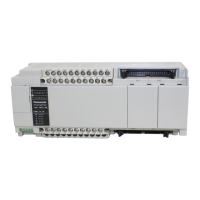
